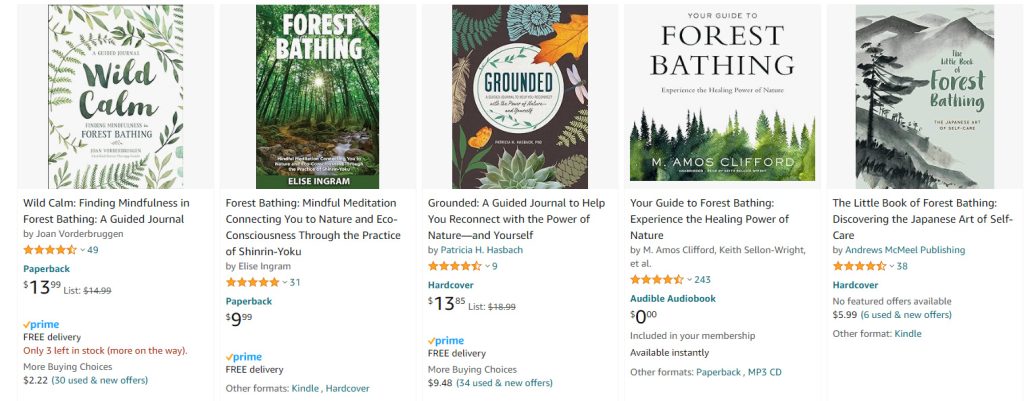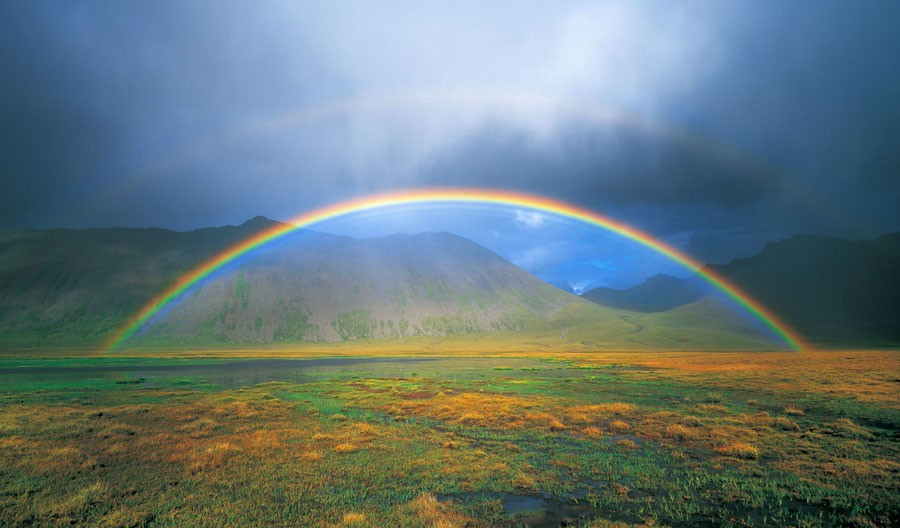Last Updated on June 12, 2025 by Avia
Appreciating nature is nothing new. In fact, I’ve been submerging myself in pockets of nature for decades as a way to unwind, heal, and stabilize myself for decades. So, when I discovered there was a technical term for what I’ve been doing all these years, I got curious, what is Shinrin-yoku? I asked myself. In my search for answers, I thought it might be a good idea to share it with you sweet peeps.
So what is Shinrin-yoku? Allow me to wax poetic in my answer by setting the stage for you. Imagine stepping into the tranquil embrace of nature, where stress melts away and a sense of calm washes over you. Imagine immersing yourself in the healing power of trees, breathing in the crisp, refreshing air as the sunlight dances through the leaves above. This is Shinrin-yoku, also known as forest bathing – a practice that has captured the hearts and minds of people seeking solace in our fast-paced modern world.
Are you intrigued? If so, I invite you to read further to learn more about what Shinrin-yoku is and why you should give it a try. From its origins rooted in Japanese culture to its profound impact on mental well-being, I’ll delve into how forest bathing can help soothe your soul, reconnect you with nature’s therapeutic embrace, and fully answer the question, “What is Shinrin-yoku?” once and for all.
Table of Contents
- What is Shinrin-yoku? The Full Download
- How Does Shinrin-yoku Work?
- How to Practice Shinrin-yoku Forest Bathing (Descriptive Version)
- How to Practice Shinrin-yoku (Abbreviated Version)
- What is the Purpose of Shinrin-yoku Forest Bathing?
- Benefits of Practicing Shinrin-yoku Forest Bathing
- How Does Shinrin-yoku Affect Depression and Anxiety?
- Where to Practice Shinrin-yoku: Best Places to Do Forest Bathing
- Can I Do Shinrin-yoku If I Live in a Big City?
- Can I Incorporate Other Types of Therapy With Shinrin-yoku?
- How Often Should I Go Forest Bathing?
- Which Trees Are Best for Forest Bathing?
- How Long Do the Effects of Shinrin-yoku Last?
- Other Frequently Asked Questions and Answers to “What is Shinrin-yoku?”
- Closing Thoughts About What is Shinrin-yoku?

What is Shinrin-yoku? The Full Download
So, what is Shinrin-yoku, exactly? It is a Japanese practice that translates to “forest bathing” in English. The term Shinrin-yoku was dubbed in 1982 by the Ministry of Agriculture & Forestry in Japan. Shinrin-yoku, or forest bathing, involves immersing yourself in the natural environment of a forest and using your senses to connect with nature.
But what does this mean for you? Well, think of it as taking a mindful walk through the woods or spending time simply being present in nature. It’s not about hiking or exercising; instead, it’s about slowing down and paying attention to the sights, sounds, smells, and sensations around you.
Shinrin-yoku has gained popularity as a form of ecotherapy or nature therapy due to its numerous health benefits. Research reveals that devoting time to communing with nature can significantly lower stress levels and improve overall well-being. In fact, forest bathing has been linked to reduced heart rate and blood pressure, increased immune system function, improved mood and sleep quality, and enhanced focus and creativity – just to name a few!
How Does Shinrin-yoku Work?
So how does Shinrin-yoku work? When we spend time in nature – away from the noise and distractions of our daily lives – our bodies naturally start to relax. The fresh air we breathe contains phytoncides – antimicrobial compounds released by trees – which boost our immune system and have a calming effect on our nervous system.
Moreover, being surrounded by trees allows us to benefit from their positive energy. Trees release organic compounds called “tree aerosols,” which research suggests can enhance our mental health by reducing feelings of anxiety and depression.

How to Practice Shinrin-yoku Forest Bathing (Descriptive Version)
To start, find a quiet forest or natural area where you can immerse yourself in nature’s sights, sounds, and smells. Leave behind your phone and other distractions; this is your time for mindful presence.
As you enter the forest, take a moment to ground yourself. Breathe deeply and consciously release any tension in your body. Engage all of your senses as you walk slowly and thoughtfully among trees.
Observe the play of sunlight filtering through the leaves above. Feel the texture of tree bark beneath your fingertips. Listen attentively to birdsong and rustling leaves. Inhale deeply to savor the scent of pine needles or damp earth.
Allow yourself to wander without haste or agenda. Let go of any expectations or pressures weighing on your mind. Instead, focus on being fully present in each moment.
If you feel called to do so, find a spot where you can sit quietly for a while – perhaps beside a babbling brook or under a towering oak tree – and simply be still. Close your eyes if it feels comfortable, and let go of any thoughts racing through your mind.
Engaging in Shinrin-yoku doesn’t require any specific techniques; it’s more about embracing an attitude of openness and receptivity toward nature’s healing energies.
How to Practice Shinrin-yoku (Abbreviated Version)
1) Find an area rich in trees where you feel comfortable.
2) Leave behind any distractions, such as phones or electronic devices.
3) Take slow walks while paying attention to your surroundings.
4) Engage all your senses – touch leaves or tree bark gently, listen closely for bird songs or rustling leaves, breathe deeply, and take in the energy of the earth.
Submerge Yourself Into Natural Healing and Spiritual Growth With the Help of These Amazon Selections
What is the Purpose of Shinrin-yoku Forest Bathing?
Shinrin-yoku forest bathing aims to connect with nature and promote overall well-being. Many people feel disconnected from the natural world in our fast-paced and technology-driven world. This disconnection can lead to increased stress, anxiety, and other health issues.
One of the main purposes of Shinrin-yoku is to reduce stress levels. Studies have shown that spending time in nature can tame cortisol levels, which is known as the “stress hormone.” Being surrounded by trees and greenery helps us unplug from the pressures of daily life.
Another purpose of Shinrin-yoku is to improve mental well-being. Research has found that spending time in nature can reduce symptoms of depression and anxiety. The peacefulness and tranquility of natural settings have a soothing effect on our minds, allowing us to let go of negative thoughts and worries.
Additionally, Shinrin-yoku aims to enhance physical health. Breathing in fresh air while being surrounded by trees allows us to take in beneficial phytoncides – antimicrobial compounds released by plants – which boost our immune system’s function.

Benefits of Practicing Shinrin-yoku Forest Bathing
When you step into a forest, something magical happens. The air feels crisper, cleaner somehow. The scent of pine fills your nostrils as you inhale deeply. You listen thoughtfully to the soft rustling of leaves overhead and feel the softness of moss beneath your feet.
But how does all this translate into healing? Well, it turns out that spending time in nature has numerous physiological benefits for our bodies and minds. Scientific research has shown that being in nature reduces stress levels by lowering cortisol levels and blood pressure while increasing immune system function.
Moreover, when we immerse ourselves in nature through Shinrin-yoku practices like mindfulness meditation or simply walking quietly among trees without any distractions or technology around us – our brainwaves shift towards more relaxed states associated with calmness and clarity.
In addition to these immediate effects on our well-being, there are also long-term benefits to regularly practicing Shinrin-yoku. Studies have shown that regular exposure to nature can boost creativity and enhance cognitive function and problem-solving abilities. Here are some quickie bennies you can look forward to enjoying when practicing Shinrin-yoku:
Reduces stress and anxiety
Shinrin-yoku has been proven to lower cortisol levels, the hormone responsible for stress. Immersing yourself in nature helps calm your mind and promotes relaxation.
Boosts mood and mental well-being
Spending time in nature stimulates the release of endorphins, which are natural mood boosters. Studies have shown that forest bathing can improve symptoms of depression and increase overall feelings of happiness.
Enhances immune function
Breathing in phytoncides, the essential oils released by trees, can strengthen your immune system. These compounds help fight off viruses and bacteria, reducing the risk of illness.
Improves focus and creativity
Being surrounded by nature allows you to disconnect from technology and distractions. This promotes better concentration and enhances creativity, allowing your mind to wander freely.
Increases energy levels
Nature rejuvenates our bodies, leaving us feeling energized after a forest bathing session. The fresh air, sunlight, and peaceful environment contribute to increased vitality.
Promotes better sleep
Exposing yourself to natural light during the day helps regulate your circadian rhythm, leading to improved sleep quality at night.
Improves cardiovascular health
Research suggests that spending time in forests can ease blood pressure and reduce the risk of heart disease by improving circulation.

How Does Shinrin-yoku Affect Depression and Anxiety?
Anxiety and depression are inevitable in today’s fast-paced, technology-driven world. Many individuals seek natural and holistic approaches to manage these mental health conditions, such as forest bathing.
Forest bathing has shown promising results in reducing anxiety and depression symptoms. When we immerse ourselves in nature, our senses come alive as we take in the natural environment’s sights, sounds, smells, and textures. This sensory experience helps redirect our attention away from negative thoughts and worries often accompanying anxiety and depression.
Spending time in nature also promotes relaxation by lowering cortisol levels (the stress hormone) while increasing serotonin production (the happiness hormone). This can boost overall mood, making forest bathing an effective therapeutic practice for those struggling with anxiety or depression.
Moreover, being surrounded by trees during forest bathing allows us to breathe in phytoncides – aromatic compounds emitted by plants – which have been linked to reduced stress levels. These phytoncides help activate our parasympathetic nervous system, promoting a state of calmness and relaxation.
Studies also show that basking in nature can increase physical activity levels, which may contribute to improved mental health outcomes. Engaging in light exercise while practicing forest bathing can release endorphins – the body’s feel-good hormones – further alleviating symptoms of depression and anxiety.
Forest bathing offers a unique opportunity for individuals suffering from anxiety or depression to find solace amidst the tranquility of nature. By submerging ourselves fully into this therapeutic practice on a regular basis, we may experience relief from symptoms associated with these mental health conditions.

Where to Practice Shinrin-yoku: Best Places to Do Forest Bathing
If you’re ready to embark on a Shinrin-yoku adventure and immerse yourself in the therapeutic power of nature, you might be wondering where the best places are to practice forest bathing. Luckily, there is no shortage of breathtaking locations that offer the perfect setting for this healing practice.
Redwood Forest, California
One incredible place to try Shinrin-yoku is in the ancient redwood forests of California. I can testify. Some of my most cathartic and healing moments were spent in parts of this bodacious forest, just soaking up the arboreal vibes. These majestic giants have an undeniable presence that will leave you feeling small yet connected to something greater than yourself. The towering trees create an enchanting canopy overhead, allowing beams of sunlight to filter through and illuminate your path as you walk amidst their grandeur.
Smoky Mountains National Park, N. Carolina and Tennessee
For those on the East Coast, the Great Smoky Mountains National Park offers abundant opportunities for forest bathing. With over 800 miles of hiking trails, cascading waterfalls, and diverse flora and fauna, this picturesque destination provides a serene sanctuary for experiencing the benefits of Shinrin-yoku.
Yakushima Island, Japan
If you find yourself across the pond in Japan, there’s no better place to practice forest bathing than at Yakushima Island. This UNESCO World Heritage Site is home to ancient cedar forests that have been thriving for thousands of years. Walking among these ancient trees creates a profound sense of tranquility and allows you to fully appreciate nature’s enduring beauty.
Nuuksio, Finland
In Europe, Finland boasts vast expanses of pristine wilderness where one can truly reconnect with nature during a forest bathing experience. The country’s national parks, such as Nuuksio or Lemmenjoki, offer untouched landscapes filled with tranquil lakes, dense forests teeming with wildlife, and endless opportunities for reflection and rejuvenation.
Of course, this beautiful planet has loads of hot spots perfect for Shinrin-yoku practices. These are just a few suggestions. No matter where you are located or where your travels take you next, remember that even local parks or nearby green spaces can provide ample opportunities for practicing Shinrin-yoku. Nature exists all around us; we just need to take a moment to slow down and embrace it.

Can I Do Shinrin-yoku If I Live in a Big City?
Living in a big city can sometimes feel overwhelming with the hustle and bustle of daily life. But that doesn’t mean you can’t experience the benefits of Shinrin-yoku, even if you don’t have immediate access to lush forests or sprawling nature reserves.
While finding pristine natural environments in urban areas may be more challenging, there are still nooks and crannies of nature where you can settle into some solid Shinrin-yoku practices. For instance, most cities have parks, botanical gardens, or green spaces. These can be the perfect spots for you to escape the concrete jungle for a while and immerse yourself in greenery.
Even small pockets of nature within the city can provide respite from the noise and chaos. Take a stroll through your local park during lunch breaks or visit rooftop gardens if they are available nearby. These urban oases offer an opportunity to breathe fresh air, listen to birdsong, and reconnect with nature on a smaller scale.
Remember that Shinrin-yoku is not solely about being surrounded by towering trees; it’s also about engaging all your senses and cultivating mindfulness in nature. So take some time to notice the vibrant colors of flowers blooming amidst skyscrapers or savor the fragrance of potted plants on balconies.
Additionally, consider bringing elements of nature into your own living space. Fill your home with indoor plants, create a windowsill herb garden, or invest in botanical-inspired artwork. These simple touches can help bring feelings of tranquility and connection to the natural world into your daily life.
While practicing Shinrin-yoku within an urban environment may require some creativity and adaptation compared to traditional forest bathing experiences, it is certainly possible. You can still reap many therapeutic benefits by seeking out green spaces within your cityscape and consciously engaging with nature wherever possible.
Can I Incorporate Other Types of Therapy With Shinrin-yoku?
Incorporating other types of therapy with Shinrin-yoku can greatly enhance your overall experience and benefits. One popular option is to combine forest bathing with yoga, as both practices focus on connecting with nature and promoting relaxation. Imagine practicing sun salutations while surrounded by a lush forest’s soothing sights and sounds – it’s the perfect way to rejuvenate both body and mind.
Tai chi is another complementary practice that can be integrated with Shinrin-yoku. This ancient Chinese martial art emphasizes slow, flowing movements that promote balance, flexibility, and mindfulness. Performing tai chi in a tranquil natural setting can amplify its calming effects and help you feel more grounded.
Meditation also pairs well with Shinrin-yoku as it cultivates present-moment awareness and inner peace. Find a quiet spot amidst the trees, close your eyes, and allow yourself to fully immerse yourself in the serenity of nature. Zone in on your breath or use different meditation techniques specifically designed for outdoor settings.
By combining these therapeutic practices together, you create a powerful synergy that enhances their individual benefits. Whether you choose yoga, tai chi, or meditation (or even all three), incorporating them into your forest bathing routine can deepen your connection with nature while providing additional stress relief and mental clarity. So go ahead – explore different combinations that resonate with you personally!

How Often Should I Go Forest Bathing?
How often you should practice Shinrin-yoku depends on your own preferences and schedule. Some people may find that going once a week is enough to reap the benefits, while others may want to go more frequently.
The key is to make it a regular part of your routine. Just like any other form of self-care or therapy, consistency is important for long-term results.
If you have the opportunity, try to go at least once a month. This will allow you to experience the changing seasons and different energies of nature throughout the year.
However, if you live in an urban area with limited access to forests, don’t fret! You can still incorporate elements of nature into your daily life. Take short walks in nearby parks or even just spend some time sitting by a tree during your lunch break.
Remember, forest bathing is not about ticking off boxes or adhering strictly to guidelines. It’s about finding what works best for you and incorporating it into your lifestyle in a way that brings joy and relaxation.
Which Trees Are Best for Forest Bathing?
When it comes to this Shinrin-yoku practice, any tree can provide benefits. However, some trees have been found to be particularly beneficial for promoting relaxation and overall well-being.
Japanese cedar, or hinoki, is one of the most popular trees for forest bathing. Its fresh aroma calms the mind and body, helping to reduce stress and anxiety. The towering redwoods also make an excellent choice, as their majestic presence creates a sense of awe and tranquility.
The eucalyptus tree is highly recommended for those seeking clarity and mental rejuvenation. Its invigorating scent stimulates focus and concentration while clearing the mind of negativity. Another great option is the pine tree, known for its refreshing fragrance that promotes deep breathing and improves respiratory health.
If you’re looking to connect with your spiritual side during your forest bath, consider spending time near a sacred oak or maple tree. These ancient symbols of strength and wisdom can help foster a deeper connection with nature and yourself.
Remember that each person may resonate differently with different types of trees. Take some time to explore various forests until you find the ones that speak to you personally.

How Long Do the Effects of Shinrin-yoku Last?
The truth is, the effects can vary from person to person and may also depend on various factors, such as the duration and frequency of your forest bathing sessions.
Some studies suggest that even a short walk in nature can immediately positively affect our mental well-being. For example, scientific studies unveiled that taking as little as 15 minutes in a natural environment can reduce blood pressure, lower stress hormone levels, and improve mood.
However, these immediate benefits don’t necessarily mean that they will last forever. Like any form of therapy or self-care practice, the effects of forest bathing may fade over time if not practiced regularly. Making forest bathing a regular part of your routine is important to maintain the benefits.
The good news is that even if you can’t escape to a lush green forest every day, incorporating small doses of nature into your daily life can still be beneficial. Spending time in gardens or parks, tending to houseplants, or even looking at pictures or videos of nature can help reinforce those positive feelings.
How long the effects last will depend on each individual and their unique circumstances. Regular exposure to nature through activities like Shinrin-yoku is key for reaping its full benefits and maintaining overall well-being.
Other Frequently Asked Questions and Answers to “What is Shinrin-yoku?”
Now that I’ve (hopefully) adequately answered the question, what is Shinrin-yoku, you might have other questions. Here are a few Qs & As to further quench your curiosity.
Absolutely! While many people may associate forest bathing with the warmer months, it can be just as beneficial during winter. In fact, some argue that winter forest bathing offers its own unique advantages.
When you engage in Shinrin-yoku during the colder months, you have a chance to experience nature in a different light. The crisp air, bare trees adorned with snow or frost, and the quiet stillness all contribute to a serene and peaceful atmosphere. This can enhance your sense of mindfulness and deepen your connection with nature.
In addition to enjoying the tranquility of a winter landscape, there are other benefits to winter forest bathing. Being outside in nature during colder temperatures can help boost your immune system and increase Vitamin D levels which are typically lower during this time of year.
So bundle up warmly and embrace the beauty of the winter forest as you immerse yourself in this mindful practice. Forest bathing is not limited by season; it’s an opportunity for rejuvenation all year round!
One reason could be the calming effect nature has on our senses. The soothing sounds of rustling leaves and chirping birds, the gentle breeze caressing our skin, and the earthy scent of moss and trees all work together to create a sense of peace and relaxation.
In addition, spending time in nature allows us to disconnect from the constant stimulation of modern life. We are surrounded by screens, notifications, and endless to-do lists on a daily basis. However, when we escape to a forest, we can give our minds a break from this digital overload.
Furthermore, being immersed in nature provides an opportunity for mindfulness and self-reflection. In the quiet solitude of the woods, we can tune into our thoughts and emotions without distractions. This introspection allows us to gain clarity about ourselves and find inner peace.
Moreover, forests offer an escape from pollution-filled urban environments. The air quality in natural settings tends to be fresher due to abundant plant life that releases oxygen while absorbing carbon dioxide.
Research has shown that spending time in nature lowers heart rate and blood pressure, leading to decreased stress levels. It also tamps down the production of cortisol, a hormone associated with stress.
Additionally, forest bathing promotes better respiratory health. Trees release phytoncides, which are antimicrobial compounds that help boost our immune system. Breathing in these chemicals can improve lung function and lower the risk of respiratory conditions such as asthma.
Furthermore, spending time outdoors increases physical activity levels. Whether it’s walking along a forest trail or engaging in activities like hiking or gardening, being active in nature helps improve cardiovascular fitness and muscle strength.
Moreover, exposure to natural sunlight during forest bathing helps regulate sleep patterns by promoting melatonin production at night. Given that solid sessions of sleep are essential for maintaining optimal cognitive function and overall mental well-being, Shinrin-yoku could be your answer to quality rest.
Nope. As we’ve discussed, trees do have healing powers, but so do other natural elements Mother Nature provides. The point of Shinrin-yoku is bonding with nature – that could be appreciating flowers, meditating on greenery, enjoying nature’s wild creatures, birdsong, etc. A forest of trees is certainly a boon to your Shinrin-yoku experience, but all of nature posits bountiful benefits too.

Closing Thoughts About What is Shinrin-yoku?
In today’s fast-paced and stressful world, finding ways to relax and rejuvenate is essential for our overall well-being. Shinrin-yoku, offers a unique and powerful way to connect with nature and improve our mental and physical health.
Delving deep into the forest’s sights, sounds, and smells allows us to tap into its healing powers. The practice of Shinrin-yoku provides stress relief and promotes mindfulness, meditation, and a deeper connection with the natural world.
Whether you choose to explore a nearby park or venture deep into a dense forest reserve, Shinrin-yoku can be practiced anywhere there are trees. Even if you live in a bustling city, you can still find pockets of greenery where you can escape the concrete jungle for moments of tranquility. As always, thanks for reading, and I hope all of you have a sensational time during your Shinrin-yoku practices!
Mighty brightly,

© Copyrighted. All Rights Reserved.
Avia’s Amazon Picks for You
Submerge Yourself Into Natural Healing and Spiritual Growth With the Help of These Amazon Selections
Elevate Your Meditation With These Amazon Selections
Want more? Me too! That’s why I’ve also got this for you on Whats-Your-Sign:













